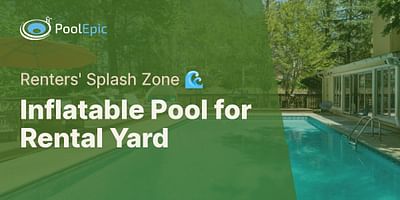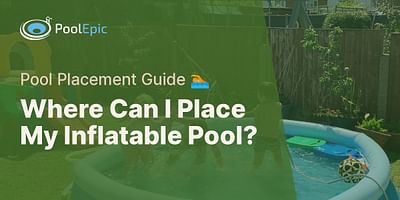An avid lover of the outdoors, Francesca Hodkiewicz has made a name for herself as an expert in water-based activities and products. Over the past ten years, she has immersed herself in the world of inflatable pools, exploring everything from compact kiddie pools to expansive family-sized options. Her practical experience, combined with her detailed research, positions her as a reliable resource for advice on inflatable pools.
Absolutely! Building a swimming pool inside a building is not only possible but also a fantastic way to enjoy the benefits of a pool all year round, regardless of the weather outside. Whether you have a spacious basement, a dedicated indoor pool room, or even a large garage, creating an indoor swimming pool can be a game-changer for your home.
When it comes to setting up an indoor swimming pool, there are a few key considerations to keep in mind. Let's dive in!
1. Space and Structural Requirements:
Before you start planning, assess the available space and ensure that the building's structure can support the weight of a pool. Consult with a professional contractor or engineer to evaluate the feasibility of your indoor pool project. They will help determine if any modifications or reinforcements are needed to ensure the safety and stability of the building.
2. Ventilation and Humidity Control:
Indoor pools generate a significant amount of humidity and moisture, which can lead to mold, mildew, and damage to the building's structure if not properly managed. To maintain a healthy and comfortable environment, invest in a robust ventilation system that can effectively remove excess moisture from the air. Dehumidifiers and air exchange systems are essential to prevent condensation and maintain optimal humidity levels.
3. Waterproofing and Insulation:
Proper waterproofing is crucial to prevent leaks and water damage. Consult with a professional contractor experienced in indoor pool installations to ensure that the pool area is adequately sealed and waterproofed. Additionally, consider insulation to regulate the temperature and reduce energy costs associated with heating the pool area.
4. Pool Type and Size:
When choosing a pool for indoor installation, consider the available space and your specific needs. Options range from small adult-sized kiddie pools to larger family-sized inflatable pools. Inflatable pools are a popular choice for indoor installations due to their ease of setup and versatility. They can be deflated and stored when not in use, making them ideal for those with limited space.
5. Safety Measures:
Just like outdoor pools, indoor pools require safety measures to prevent accidents. Install proper pool barriers, such as fences or gates, to restrict access when the pool is not in use. Additionally, consider installing non-slip flooring around the pool area to minimize the risk of slips and falls.
Conclusion:
Building a swimming pool inside a building is indeed possible and can provide year-round enjoyment for you and your family. By considering factors such as space, ventilation, waterproofing, pool type, and safety measures, you can create a safe and inviting indoor pool area. Remember to consult with professionals and experts in indoor pool installations to ensure a successful and enjoyable project.
For more information and tips on inflatable pools, including the best indoor inflatable pool options, visit












